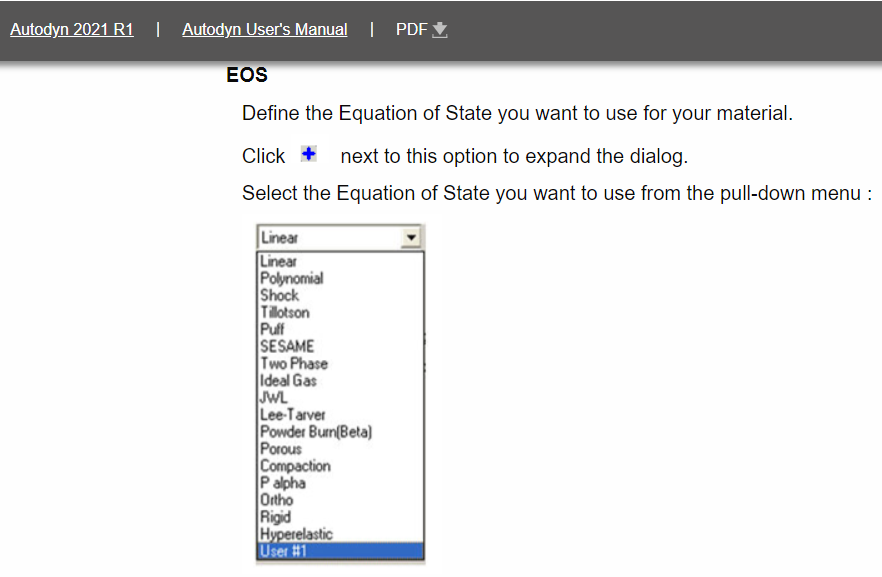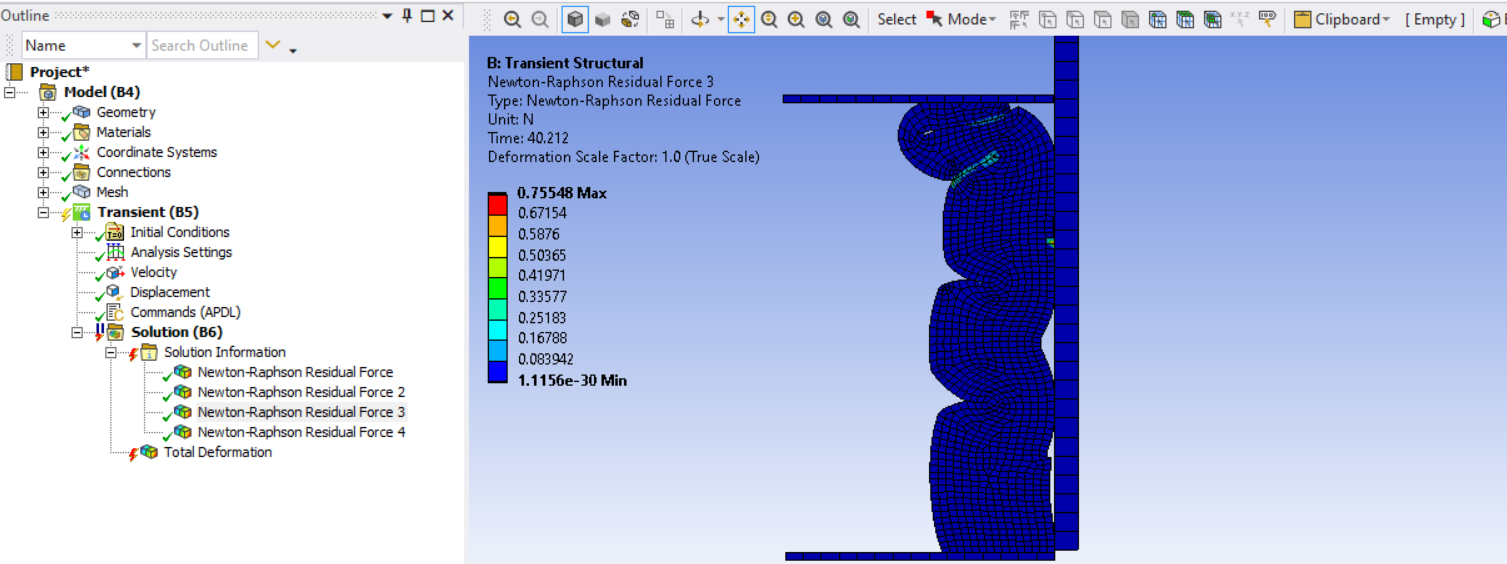-
-
May 1, 2021 at 6:29 pm
Mahdi_171
SubscriberHi,
Anyone have an idea why the Ogden foam model 3rd order is not working in explicit.
May 1, 2021 at 8:14 pmRam Gopisetti
Ansys EmployeeThe answer is in your query, You need to define some form of elasticity of your material, either the elastic terms or the EOS terms with density. Try researching about such material such as Poisson's ratio, Density and Youngs Modulo to start with and then build an basic model. For further help, try to give Material name or class so that better suggestions can be made.
Cheers ,Ram
May 2, 2021 at 7:19 amMahdi_171
SubscriberThank you, .
I am modeling polyurethane foam. I got the uniaxial compression data from a lab test I have done. I did curve fitting outside Ansys because the Ogden-foam model doesn't have curve fitting for some reason, and I got these constants.
 I have also defined the foam density, shouldn't that be enough? If I put Young's modulus (linear elasticity) the hyperelastic model will be turned off of course. I don't know why the model is not working like other ones (Mooney-Rivlin, Neo-Hooken, Yeoh .....).
I have also defined the foam density, shouldn't that be enough? If I put Young's modulus (linear elasticity) the hyperelastic model will be turned off of course. I don't know why the model is not working like other ones (Mooney-Rivlin, Neo-Hooken, Yeoh .....).
May 2, 2021 at 10:32 amMahdi_171
SubscriberDear,sorry to bother you but can you or any active support member look at this problem? I feel I am doing everything right but explicit still asks me for defining elasticity which should be defined already by the model.
thank you.
May 2, 2021 at 1:28 pmpeteroznewman
SubscriberIf you were using Transient Dynamics instead of Explicit Dynamics, then it would be enough. Why are you using Explicit Dynamics?
Explicit Dynamics is not an APDL solver so not all materials that work with APDL work in Explicit Dynamics.
Do as said and define an EOS for this material if you insist on using Explicit Dynamics.
Explicit Dynamics uses the Autodyn solver. Below is the help section for that. Note that Hyperelastic is one of the choices on the pull down menu.
 May 2, 2021 at 4:53 pm
May 2, 2021 at 4:53 pmMahdi_171
SubscriberDear Thank you very much for your help. I am using explict to run the same type of simulation you helped me with before and it had problems with the convergence for self contact elements after trying everything so we moved it to explicit. Can transient dynamics handle self contact as well?
Another thing, could you tell me from were you obtained the web manual you showed above, I could not find it anywhere.
Thank you again.
Regards,
May 2, 2021 at 5:06 pmpeteroznewman
SubscriberYes, transient dynamics can do self contact, but it must be manually created. The implicit solver has to do more work to find equilibrium with contact than the explicit solver.
Open ANSYS Help using the Start Menu, ANSYS, ANSYS Help. Along the bottom is a set of alphabetical categories. Click on the AQ-CO category, then click on the Autodyn button.
May 2, 2021 at 6:40 pmMahdi_171
Subscriber
Thank you so much again. Still, the same issue with self contact even though I defined it and tried most of the convergence tips I know.
 Does it seem like there is no way for this simulation to work without explicit? I am not sure if more can be done but I guess I have to define EOS in explicit as you said.
Does it seem like there is no way for this simulation to work without explicit? I am not sure if more can be done but I guess I have to define EOS in explicit as you said.
May 2, 2021 at 6:49 pmpeteroznewman
SubscriberYes I agree that Explicit Dynamics is better for this problem.
For other members reading this discussion, here is the link to your other discussion: /forum/discussion/24287/convergence-issue-with-elastomer-bumpers#latest
Viewing 8 reply threads- The topic ‘Ogden-Foam model equation of state’ is closed to new replies.
Ansys Innovation SpaceTrending discussionsTop Contributors-
3139
-
1007
-
923
-
858
-
792
Top Rated Tags© 2025 Copyright ANSYS, Inc. All rights reserved.
Ansys does not support the usage of unauthorized Ansys software. Please visit www.ansys.com to obtain an official distribution.
-
The Ansys Learning Forum is a public forum. You are prohibited from providing (i) information that is confidential to You, your employer, or any third party, (ii) Personal Data or individually identifiable health information, (iii) any information that is U.S. Government Classified, Controlled Unclassified Information, International Traffic in Arms Regulators (ITAR) or Export Administration Regulators (EAR) controlled or otherwise have been determined by the United States Government or by a foreign government to require protection against unauthorized disclosure for reasons of national security, or (iv) topics or information restricted by the People's Republic of China data protection and privacy laws.












